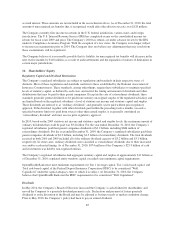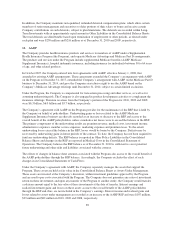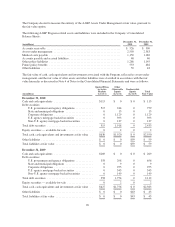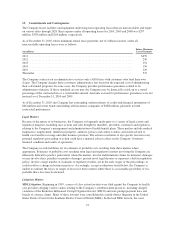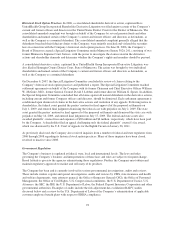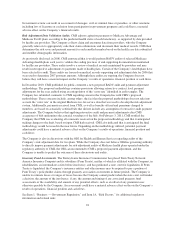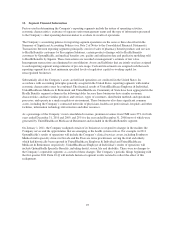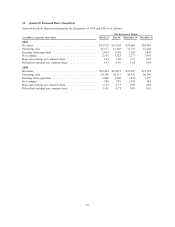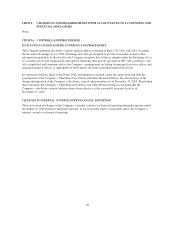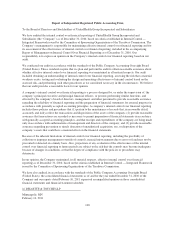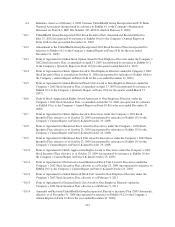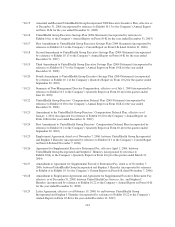United Healthcare 2010 Annual Report Download - page 97
Download and view the complete annual report
Please find page 97 of the 2010 United Healthcare annual report below. You can navigate through the pages in the report by either clicking on the pages listed below, or by using the keyword search tool below to find specific information within the annual report.14. Segment Financial Information
Factors used in determining the Company’s reporting segments include the nature of operating activities,
economic characteristics, existence of separate senior management teams and the type of information presented
to the Company’s chief operating decision-maker to evaluate its results of operations.
The Company’s accounting policies for reporting segment operations are the same as those described in the
Summary of Significant Accounting Policies (see Note 2 of Notes to the Consolidated Financial Statements).
Transactions between reporting segments principally consist of sales of pharmacy benefit products and services
to Health Benefits customers by Prescription Solutions, certain product offerings sold to Health Benefits
customers by OptumHealth, and medical benefits cost, quality and utilization data and predictive modeling sold
to Health Benefits by Ingenix. These transactions are recorded at management’s estimate of fair value.
Intersegment transactions are eliminated in consolidation. Assets and liabilities that are jointly used are assigned
to each reporting segment using estimates of pro-rata usage. Cash and investments are assigned such that each
reporting segment has at least minimum specified levels of regulatory capital or working capital for
non-regulated businesses.
Substantially all of the Company’s assets are held and operations are conducted in the United States. In
accordance with accounting principles generally accepted in the United States, reporting segments with similar
economic characteristics may be combined. The financial results of UnitedHealthcare Employer & Individual,
UnitedHealthcare Medicare & Retirement and UnitedHealthcare Community & State have been aggregated in the
Health Benefits segment column in the following tables because these businesses have similar economic
characteristics and have similar products and services, types of customers, distribution methods and operational
processes, and operate in a similar regulatory environment. These businesses also share significant common
assets, including the Company’s contracted networks of physicians, health care professionals, hospitals and other
facilities, information technology infrastructure and other resources.
As a percentage of the Company’s total consolidated revenues, premium revenues from CMS were 27% for both
years ended December 31, 2010 and 2009, and 25% for the year ended December 31, 2008 most of which were
generated by UnitedHealthcare Medicare & Retirement and included in the Health Benefits segment.
On January 1, 2011, the Company realigned certain of its businesses to respond to changes in the markets the
Company serves and the opportunities that are emerging as the health system evolves. For example, in 2011
OptumHealth’s results of operations will include the Company’s clinical services assets, including Southwest
Medical multi-specialty clinics in Nevada and the Evercare nurse practitioners serving the frail and elderly,
which had historically been reported in UnitedHealthcare Employer & Individual and UnitedHealthcare
Medicare & Retirement, respectively. UnitedHealthcare Employer & Individual’s results of operations will
include OptumHealth Specialty Benefits, including dental, vision, life and disability. There were no changes to
the Company’s reportable segments as a result of these changes. The Company’s periodic filings beginning with
the first quarter 2011 Form 10-Q will include historical segment results restated to reflect the effect of this
realignment.
95


